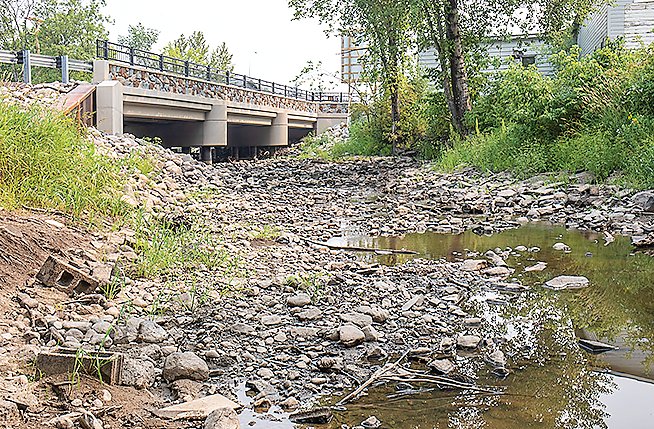Support the Timberjay by making a donation.
Ongoing drought is a major one, but not yet historic
REGIONAL— The next several weeks could well determine whether the ongoing drought across Minnesota shifts from serious to the kind of historic drought experienced back in 1988. “We might …
This item is available in full to subscribers.
Attention subscribers
To continue reading, you will need to either log in to your subscriber account, or purchase a new subscription.
If you are a current print subscriber, you can set up a free website account and connect your subscription to it by clicking here.
If you are a digital subscriber with an active, online-only subscription then you already have an account here. Just reset your password if you've not yet logged in to your account on this new site.
Otherwise, click here to view your options for subscribing.
Please log in to continue |
Ongoing drought is a major one, but not yet historic
REGIONAL— The next several weeks could well determine whether the ongoing drought across Minnesota shifts from serious to the kind of historic drought experienced back in 1988. “We might go there,” said Kenny Blumenfeld, with the state climatology office in St. Paul. “We might be starting to get close to that if we don’t get some rain soon.”
Drought is a weather phenomenon that can sneak up on you, noted Blumenfeld, and a drought’s true extent and duration only becomes apparent after it’s run its course. In the middle of it, “you’re blindfolded,” acknowledges Blumenfeld.
Right now, however, it’s a major drought, one that is continuing to worsen. As it stands, said Blumenfeld, it’s the kind of drought the state could expect to experience once very 15-20 years, but exactly when it becomes something more historic might not even become clear until later, since there is often a lag in the recognition of drought.
While climatologists use a number of indicators to distinguish a drought from a dry spell, Blumenfeld notes that those criteria don’t always give consistent answers. “Certainly, some indicators are suggesting that the drought is quite advanced and extreme,” he said. Up until recently, however, he said soil moisture in most parts of the state was still pretty good.
Water levels, which have plunged across the area since late June, are among the more obvious signs of the drought here in the North Country. And data released by the Department of Natural Resources this week puts river flows in the region at close to historic lows. While long-term river level data isn’t available for most smaller Minnesota rivers, the levels documented this week are the lowest in more than a decade.
The Littlefork River, for example, was running at just 40 cubic feet per second. Even at the river’s Q90, a low level that is reached, on average, only ten percent of the time, the Littlefork should be flowing at 90 cubic feet per second (cfs). The usually larger Vermilion River is down even more dramatically from its typical flows. As of this week it was flowing at 48 cfs, or barely one-third of the river’s Q90 of 129 cfs. In a typical August, both the Vermilion and Littlefork rivers should be flowing at about 350 cfs.
The Basswood River, which normally flows at about 940 cfs in August, is down to just 179 cfs, or less than half of its Q90 of 362 cfs.
The Vermilion River’s low flow hasn’t yet had a major impact on Crane Lake, which normally receives considerable inflow from the river. “We’re sitting pretty good right now,” said Jerry Pohlman, at Nelson’s Resort on the border lake. While there’s little water entering the lake right now, Pohlman said dams that control the water level are currently closed, which is helping to sustain water levels, at least for now.
Meanwhile, there’s little indication of major relief in the offing. While the extended forecast shows a few chances of light showers or scattered thunderstorms over the next two weeks, even if those chances deliver as predicted, the drought is likely to worsen. “You need about an inch of rain a week just to keep pace right now,” notes Blumenfeld. While much of the state was running drier than normal into the spring, it was the moisture deficits in June and July that pushed the drought into the severe to extreme range. Making that up will require at least a month of well above-average rainfall, noted Blumenfeld.
While there’s no sign of a major change in the current rainfall pattern this month, Blumenfeld said the shift from summer to fall may be the state’s best chance for emerging from the drought. “When the season changes, you almost always have a weather shift,” he said. “The question is, does it change to a pattern that is favorable to precipitation here, or whether we’ll continue in a drought pattern. If we don’t get precipitation by then, September and October could be a tricky time,” he said.






